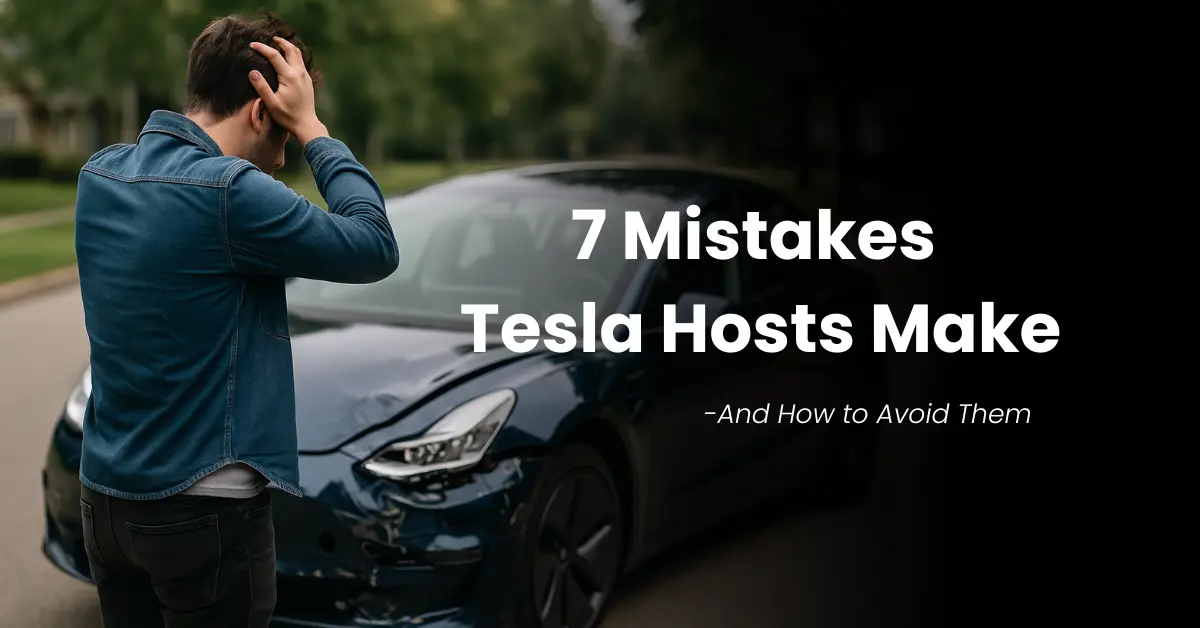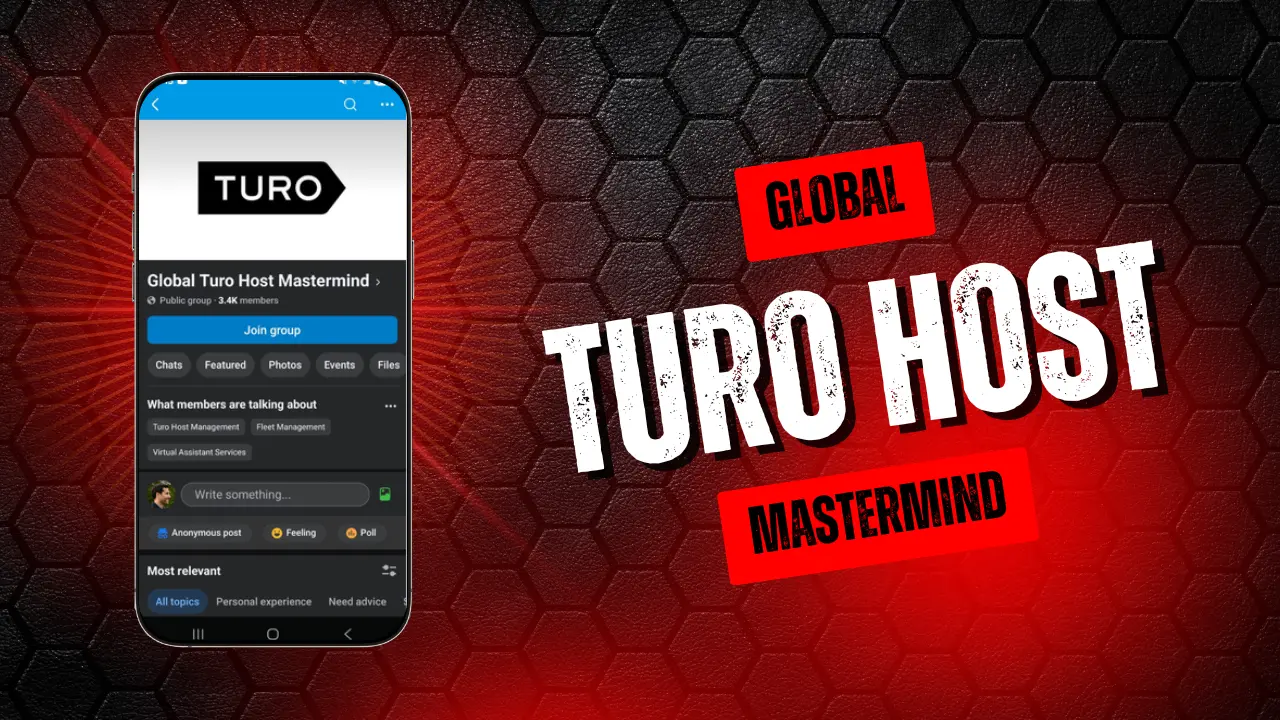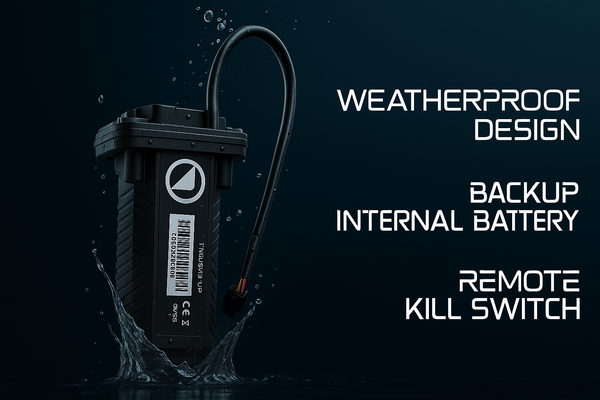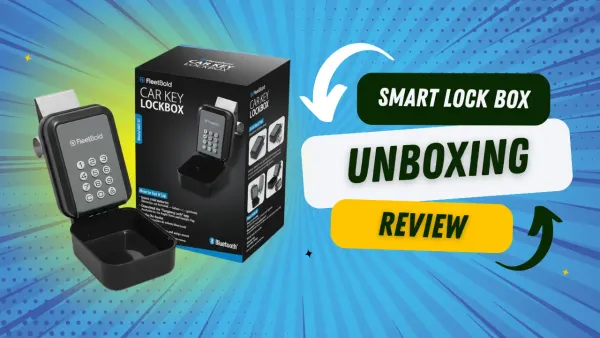Top 7 Mistakes Tesla Turo Hosts Make (And How to Avoid Them)

Introduction
If you’ve ever delivered a Tesla to a Turo guest, you know it’s not as simple as handing over the keys. These cars are beautiful, high-tech and unforgiving when something goes wrong.
A cracked glass roof, a drained battery, a guest doing deliveries without permission… All of these can lead to claims, bad reviews, or even account suspension if you’re not covered. And the worst part? Most of these situations are completely avoidable.
This blog breaks down the 7 most common mistakes Tesla hosts make during delivery and how you can avoid them with real tools, better habits, and smarter tracking.
Whether you’re a new host or a Turo veteran, if there’s a Tesla in your fleet, this one’s for you.
If you're a Turo host with a Tesla in your fleet, chances are you've had at least one stressful delivery. Between battery anxiety, claim disputes, and photo documentation, delivering an EV comes with a unique set of challenges. Here are the 7 biggest mistakes to avoid if you want to stay profitable and protected.
1. Forgetting to Capture the Roof (Especially on Glass Roof Models)
Most hosts take photos of the sides, tires, and seats but skip the roof. For Teslas and other glass-roof cars, this can be a costly mistake. A cracked roof with no pre-trip photo means you’re paying out of pocket. Always get a full shot of the roof during check-in, even if it seems unnecessary.
2. Delivering Without Checking the Tire Pressure or Range
You hand off the car with 50% battery assuming that’s enough but what if the guest drives 100 miles right away? Many Tesla hosts forget to check tire pressure and battery range before delivery, which can lead to mid-trip issues or support requests. A low-pressure warning 30 minutes after delivery reflects poorly on you and affects reviews.
3. Skipping the Trunk or Frunk Photos
You may assume guests won’t use the frunk or that damage is unlikely. But Tesla frunks are often used for luggage, groceries, or even tools. A dented frunk with no pre-trip photo? That’s on you. Always photograph the trunk and frunk, even if they seem clean and unused.
4. Not Verifying Supercharging Balance and Linking It to the Booking
Supercharging can be tricky when multiple guests use the same car. If you don’t assign the charging session to a specific booking, you may end up paying for someone else's trip. Tools like FleetBold now link every Supercharging session to its correct booking. Use them. It’s one less argument to have with support or a guest.
5. Letting the Guest Hit 0% Battery
This is one of the most painful lessons Tesla hosts learn. If the battery hits 0%, you're likely to get a complaint or worse, a dead car. It’s not just an inconvenience; it could lead to tow fees, battery issues, and denied claims. Always warn the guest, but even better: use software that alerts you in real-time and lets you track usage throughout the trip.
6. Not Capturing Speeding Incidents During the Trip
Turo’s policy allows hosts to request review removal if the guest was warned more than once about speeding. But to do that, you need proof. Always capture screenshots if the car exceeds 20+ MPH over the limit (e.g., 95 in a 75 zone). Submit these as trip photos and send a warning to the guest. That way, if they retaliate with a bad review, you’re covered under Turo’s review removal policy.
7. Assuming the Guest Knows How to Use a Tesla
Not all guests are familiar with EVs especially Teslas. Hosts who assume guests know how to use the key card, open the charging port, or activate Autopilot often deal with unnecessary complaints. It takes 2 minutes to explain, but it saves hours of customer support down the line. Even better: include a printed or digital quick guide with the basics.
Conclusion
Delivering a Tesla on Turo is different from delivering any other car. It’s more high-tech, more sensitive, and more expensive to fix. Avoiding these 7 common mistakes can save you money, time, and frustration and help you maintain your Power Host status.
FAQs
Should I include a printed guide in the car for Tesla guests?
Yes. It reduces questions and increases guest confidence during their trip.
What’s the best way to track speeding or battery usage?
Use a fleet management tool like FleetBold that alerts you in real-time and logs trip history.
Do I really need roof photos?
Absolutely especially for Teslas with glass roofs. It's the only way to protect yourself from false damage claims.






